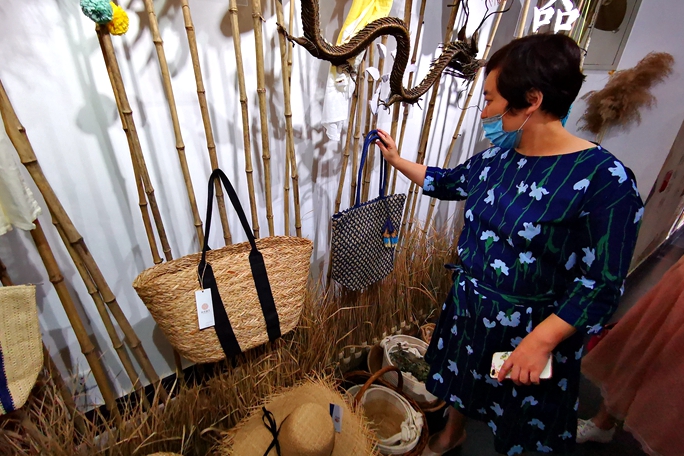Slow train offers Chinese passengers vintage charms
JINAN -- Conductors tell the passengers aboard Train No 7053 to prepare ahead for the next stop, but there is actually no need for them to hurry.
The train, which runs between the eastern Chinese cities of Zibo and Taishan, travels at an average speed of 32 km per hour and makes 23 stops along a route less than 200 km long. It is one of the slowest-running trains in Shandong province, if not the country.
"The train runs so slowly that passengers can see clearly through the windows the fruit on the trees and farmers working in the fields far away," said Zhao Xinhua, the chief conductor of the train.
Over the past decade, high-speed railways have developed rapidly in China. The country currently has the world's longest high-speed rail network, about a third of which has been designed to run at a speed of 350 km per hour.
Offering neither speed nor comfort, Train No 7053 is an anachronism in this high-speed rail era. However, the train remains a draw for many travellers who come just for its vintage charm.
For many of them, to ride Train No 7053 is to ride through history. The green external paint, fans on the ceiling and the hard bench seats with stitches are all a throwback to a time decades ago when such trains were the norm across China.
"Speed may be the name of the game in this era, but it is the slowness of the train that appeals to me. Many of us young people came to ride the slow train after reading media reports about it online," said Cai Bin, a backpacker from eastern Zhejiang province.
"I am surprised that so many backpackers were attracted by the train and came all the way from faraway places just for a ride," said Zhao, who has been working on the train as a conductor for 37 years.
Launched in 1974, the railway service of Train No 7053 had been a lifeline for nearly three decades to locals living in the mountainous regions. During that time, the train was often filled with farmers who got on board with huge loads of farm produce, hoping to sell it in a city market at a higher price.
"I still remember some twenty years ago, there was a passenger over 70 years old who always boarded the train with more than 20 kilograms of dates and got off and sold them for a profit of just 8 yuan (about $1.2) in a market in another town," Zhao recalled.
After the turn of the century, as more towns and villages along the railway became accessible by road, the slow-running train gradually fell out of favor with the locals. As a result, the number of train cars was cut from 12 to eight and eventually to four, and the train became more a tourist attraction than an essential means of transportation.
"For nearly four decades on the train, I have borne witness to a great transformation: more roads were built in the countryside, trains ran faster and people enjoyed better lives," said Zhao.
The chief conductor will retire at 55 this year, but her slow train will continue to chug along.

 Shandong Culture and Tourism Consumption Season
Shandong Culture and Tourism Consumption Season Culture, tourism sectors pick up in Shandong as epidemic wanes
Culture, tourism sectors pick up in Shandong as epidemic wanes

